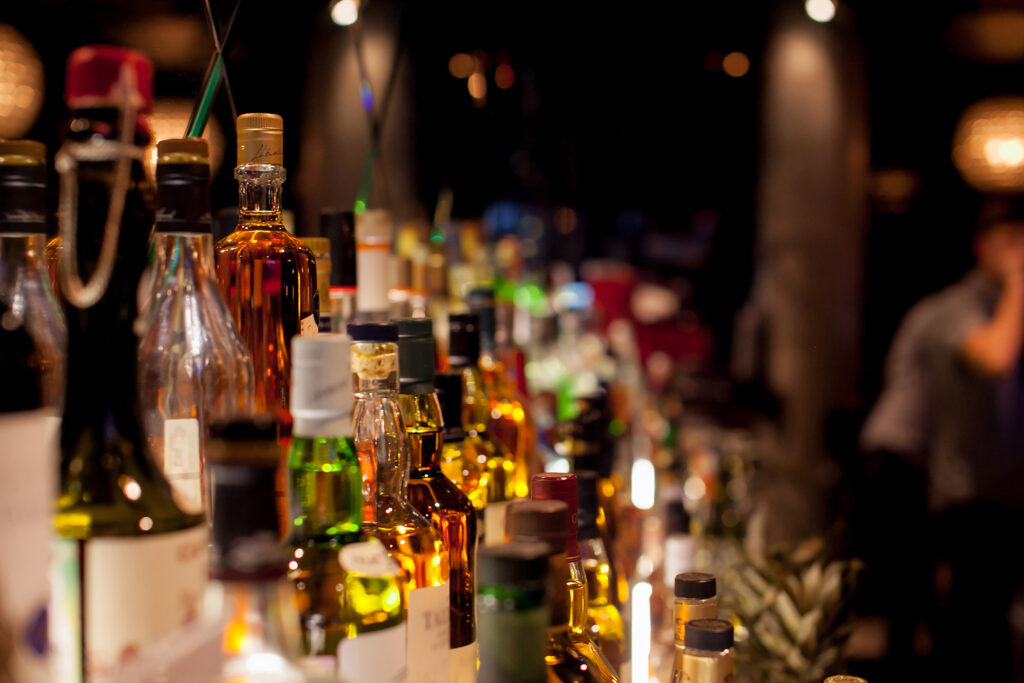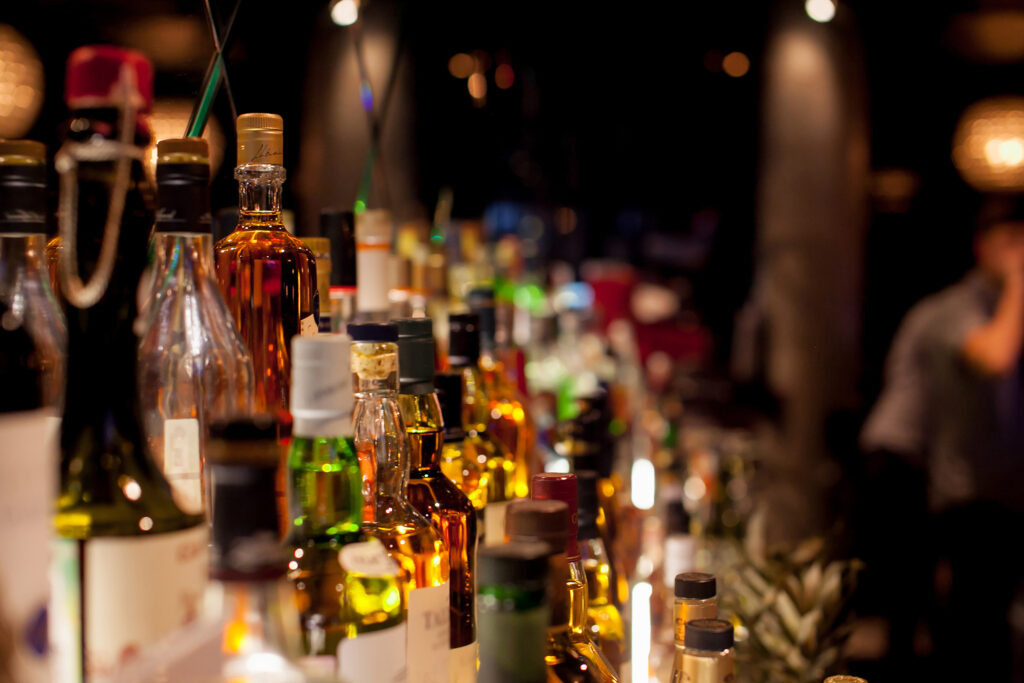[:it]Bitters and liqueurs: origins, differences and use in mixing[:]

[:en]
When we talk about bitters and liqueurs, there is often a lot of confusion with terms that replace each other and meanings that overlap. For this reason, we tried to clarify the issue with Emanuele Russo, bar manager of the NAt Cocktail House, National Manager of the Bartender Certified training school and Spirits Educational Specialist for the company producing and importing premium and superpremium spirits Compagnia dei Caribbean .
The first signs of distillation and the birth of the first elixir
“The first mention of distillation and liqueur production dates back to 700 AD, when in the medieval Arab world the first essences and perfumed oils began to be created by distilling flowers and plants”. At the beginning the purpose was not luxury but rather pharmaceutical and alchemical. Two or three hundred years later two important names who worked at the Baghdad hospital, the theoretician Avicenna and the practical Rahzes, began to study the alchemical movement primarily to aid digestion. “Thanks to the two of them, medicine became a science. Substances were extracted from flowers and plants to benefit the body, as is still done today." “In 1099, with the liberation of Jerusalem, the art of distillation also spread outside this area, reaching, among others, the school of Salerno”. We were already starting to talk about modern distillation and the first spirits and elixirs were obtained. The first bitter was created, for healing purposes, in 1200. “It was called the elixir of long life and was produced by a Catalan alchemist, Arnaldo da Villanova”. The aim was to cure an attack of renal colitis for Pope Boniface VIII during the first jubilee in history and, thanks to the success, the jubilee could continue. The recipe was subsequently codified, together with other writings, in the De Aquis Medicinalibus.

The spread of distillation and the birth of the first liqueur
The news caused a stir in abbeys and monasteries, however distillation did not yet take hold because obtaining alcohol was still too expensive: "the techniques were retrograde, they did not optimize production possibilities and caused a lot of waste". Furthermore, this news resonated with the clergy but not with the people, who did not have the tools for distilling in their hands. From approximately 1200 to 1500, the production of elixirs, bitters for medicinal purposes made with alcohol, spices and mixed with water, continued. With the discovery of America, in 1492, the range of herbs and spices that can be used in distillation expanded considerably, with the further discovery of sugar, which made consumption more drinkable. Distillation became more efficient and consumption for luxury purposes increased. “The first liqueur in history was a rose rosolio created to welcome us to the court in Tuscany and Paris”. Catherine de Medici played an important role in the diffusion of liqueurs in France.
The first certified liqueur and the diffusion of distillation
“In 1600, in the monastery of Chartreuse, a manuscript of a bitter elixir of 130 herbs arrived. After over a hundred years of study, the recipe of the first certified bitter liqueur in history was created, primarily thanks to the friar Jerome Maubec: Chartreuse Vert in 1737". Just under fifty years later, the French Revolution canceled the privileges of the clergy, caused the closure of the monasteries and allowed the art of distillation to spread beyond the convent walls. Homemade bitters began to be produced, both for pharmaceutical and luxury purposes. Subsequently, the first industrial productions also arose, with the birth of the first factories, in the mid-late 19th century, for the production of bitters and liqueurs. “In that period, bitters still had a pharmaceutical purpose and were bought in pharmacies - and medicines had already been created - while liqueur was for luxury purposes. In the 20th century, the recipes of most products were modified upwards in sugar content, to suit the consumer's palate. The recipes have always been secret and therefore we cannot know if they have changed over time. However, the herbs used remain the same: yarrow, absinthe, marjoram, gentian, angelica, anise, cloves, tonka bean, gentian, quassia.

The difference between liqueurs and bitters and the different distillation techniques
A topic that has always been much debated are the true characteristics that differentiate a liqueur from a bitter one. At a product level, while the former is a spirit drink with alcohol of agricultural origin, with an alcohol content of 15-55 % vol. and a minimum sugar content of 100 g/l, bitterness differs in the quantity of sugar, which cannot exceed 100 g/l (10%). “Having said that, many of the bitters that we call bitters are actually liqueurs and the digestive function that we also mistakenly attribute to liqueurs is more attributable to bitters, due to the lower sugar content”. In terms of extraction techniques for aromatic substances, however, we can distinguish four different ones: distillation, with which the essential oil is obtained, cold infusion or maceration, with the process of the same name for spices and subsequent filtration, hot infusion, flavoring or a mix of the different methods.
Traditions passed down to the present day
Since the birth of bitters and liqueurs centuries ago, there are still traditions that have remained intact over time. “This is the case of Chartreuse Vert, a drinkable liqueur despite its 55% vol., of Triple sec, an orange-flavoured liqueur from triple distillation, of Apricot brandy, an English distillate obtained from the fermentation of apricot fruit and kernels and, on Italian soil, Nocino, a liqueur obtained from the husk (the green, external part) of the walnut, Maraschino, a distillate of Luxardo cherries and morello cherries, Amaretto, Limoncello, Genepì, a Piedmontese liqueur and Aosta Valley obtained from the maceration of Alpine artemisia in alcohol, Rosolio, white mint cream and dark cocoa cream”. There are also some surviving productions in other countries, such as Spain, where Licor 43, the result of the distillation of 43 Mediterranean ingredients, and Hierbas, a typical Spanish liqueur obtained from the cold maceration of aromatic plants, or Tajikistan, where Samogon, a blackberry liqueur, is still current, and Greece, where ouzo, a distillate obtained from grape must and anise, is produced. Italy is currently the homeland of bitters and liqueurs in general, in fact it seems that there is at least one officially recognized recipe in every province of the country.

Use in mixing
Compared to the past, we place significantly fewer limits on mixing. In my case, wanting to talk about the products I personally deal with, I tend to use liqueurs more than bitters, due to their versatility in mixing. Salvia & Limone by Compagnia dei Caribbean is a product that can be consumed both cold and hot. It has a sweet taste, completed by the freshness of the citrus fruit and the balsamic nature of the aromatic herb. Excellent in combination with desserts, it can be used in numerous recipes, including the Tiki Garden with Plantation OFTD, Mango extract, parsley and black pepper syrup, fresh lemon, Hot, with Sage & Lemon liqueur, vermouth and falernum or Palomita, with mezcal, Salvia & Limone liqueur, lime, agave and grapefruit soda top with salt crustas flavored with Salvia & Limone liqueur. Another liqueur, more bitter in this case, is the Liquore Jefferson Amaro Importante, made with PGI lemons from Rocca Imperiale, sweet and bitter oranges and rosemary from Bisignano, bergamots from Pellaro and oregano from Palombara. When mixed, it is excellent both as a replacement for bitters in a Negroni or Americano, and as a support for vermouths.


Your favorite cocktail
I love preparing cocktails but, when it comes to being a customer, I usually prefer wine. When I choose to consume cocktails, however, I often opt for my two favorites: the Tommy's Margarita, for its acidity, during the aperitif, and the Manhattan, for the presence of whiskey and vermouth, after dinner.[:]
